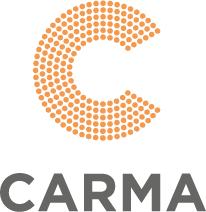30% of creative directors (CDs) in PR are women, according to the 2017 Creativity in PR global study, by The Holmes Report and Now Go Create. From a gender diversity perspective this might seem positive, especially compared to the just 11% in advertising (source: 3% Movement). But hold your applause.
There are two issues with this figure:
- It’s shrinking (by 5% since 2016). Although the job opportunities are growing – nearly 20% more PR agencies had a CD in 2017 than the year before.
- It is disappointingly disproportionate for the predominantly female PR industry (64% of the UK PR workforce are women, as per the PRCA 2016 census; in many markets around the globe the percentage is higher).
Female CDs are even more rare within UK agencies. Nick Woods, Chair of PRCA’s Creative Group estimates only 10-15%. And based on my own observations, female creative executives (ECDs or CCOs) at top UK agencies are like unicorns, and can be counted on one hand.
I’ve been part of this blessing of unicorns: I’m a woman and I’ve been chief creative in London for a top PR agency. So I know that being such a rarity is actually hardly a blessing. There’s strength in numbers.
The advertising folks are currently trying to right the ratio (improving from 3% a few years ago). But they struggle. Developing a strong talent pipeline doesn’t happen overnight, and changing the ‘cool boys gang’ structure that was endemic for decades in advertising creative departments (and sadly still exists in some places), is easier said than done.
But in PR we have a golden opportunity. The creative function is still in its infancy, and the specialised departments in early development. We have the chance to build a solid foundation for creative excellence, grounded in diversity and inclusion, from which creativity benefits so much.
The PR industry can do significantly better this year. And not just for gender equality’s sake (although this alone should be good enough reason for any sensible person in 2018!), but for business’ sake too. As CDs have increasing influence over PR work, not having more women in these roles “is business suicide”, in these times when “women influence upwards of 80% of consumer spending and 60% of social media sharing” (source: 3% Movement).
If you already have a team of creative specialists, and it’s effective, diverse and balanced, good job! Keep at it! But if it’s more of a ‘boys gang’, you have work to do. And let’s be clear: in a bigger team, including one woman doesn’t redress the balance; it’s a token gesture.
Let me share with you some practical advice, especially with those of you senior enough to have the power to influence your agency structure and environment:
- First, make sure the women in minority feel included, so they don’t leave while you fix things. Make sure they are not pigeonholed, give them equally interesting projects, based on abilities and not gender; provide opportunities for them to pitch in front of senior clients, and enable them to see their good ideas through to the end. Respect them like creative equals, and don’t allow infantilising or sexism to creep in. Check that any team bonding activities are women-friendly, and they don’t have to choose between adapting to male taste and not participating.
- Make sure all creatives are given equal opportunities for development (both hard and soft skills) and promotion. Bias training is useful too. If the CD is male, make sure women team members are also developed for leadership. Statistics show that men often tend to mentor other men.
- Review the recruitment process to see how it impacts on the balance of your team. Make it standard practice that for every new hire there will be an equal number of men and women candidates of the same calibre to choose from; then make sure there’s no bias during interviews.
- Keep your own unconscious bias in check (and this applies to women too: they can be tougher and more judgemental with other women, and more lenient with men). Be aware that good creatives are supposed to be more rebellious, outspoken, bold, even brash sometimes, and these are things we often subconsciously appreciate and expect from men, and detest and penalise in women. Don’t be one of those who mistakes an assertive woman for an aggressive one, and who fears fearless women. According to research (by Catalyst and McKinsey), and as quoted by industry activist Cindy Gallop many times, “men are hired and promoted on potential, and women on performance, and sometimes not even then”. Fight this unconscious bias.
- Create a flexible working environment. Creativity isn’t dependent on location, so there’s no need for creatives to work full time from the office; judge people based on results, not time spent at their desks. The more flexibility, the more chance of attracting, and keeping, kick-ass creative mums. And dads.
- Don’t stop until you have a truly diverse and gender-balanced creative team, with women employed across all levels, from juniors to leaders (even though they may not be the overall team leader).
If you’re only just starting your creative structure, make the effort to do it right. Don’t think that brilliant and dedicated women CDs can’t be found. They may seem as rare as unicorns, but they are out there. If you strive for a diverse list of great candidates, you will have the opportunity to see all types of amazing talent. Keep an open mind and… may the best one win!





